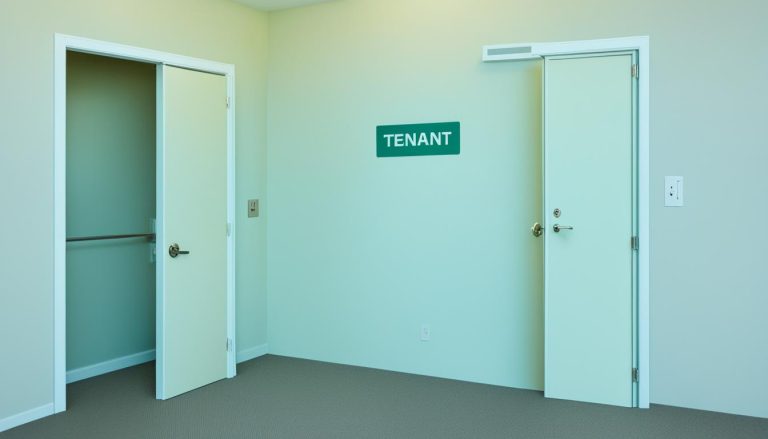Have you ever wondered if you can add your daughter to your council tenancy, and what it might entail? Understanding the nuances of council house tenant additions is essential for those looking to ensure housing stability for their family members. Whether it’s a daughter council house inclusion or adding a child to a tenancy agreement, each process involves crucial steps and legal considerations.
Tenants of council properties may wish to add a family member to their tenancy agreement for various personal reasons. Firstly, it’s mandatory to obtain permission from the landlord. Moreover, if the circumstances involve the tenant’s departure from the property or a subsequent marriage, consulting a solicitor becomes essential to understand the process of assigning the tenancy. For tenants who have passed away, relatives who have lived at the property or individuals who moved in to care for the tenant’s dependents may succeed the tenancy, though certain conditions apply.
It’s vital for tenants and potential successors to be aware of the implications on rent responsibility and benefit entitlements when considering adding someone to a council tenancy. Understanding these factors helps in making informed decisions and safeguarding housing rights.
Understanding Council Tenancy Rules: Adding a Family Member
When considering the addition of a family member to a council tenancy, understanding the local council housing rules is crucial. Tenants must adhere to council property tenancy guidelines, which include specific legal rights such as ‘assignment’ during their lifetime or ‘succession’ after their demise.

The assignment process may be necessary due to health issues or caring responsibilities. Tenants are required to continue abiding by rental agreements and maintain communication with the landlord regarding any changes in tenancy status. It is particularly important to consult with housing advisers to clarify the procedures, especially if the landlord refuses the request to amend the tenancy.
Understanding tenancy rights for family members under local council housing rules ensures that individuals can make informed decisions about their housing situation. Additionally, applying for joint tenancy with a child may provide the security and stability needed for families. To navigate these rules effectively, seeking professional advice and maintaining clear communication with the landlord are vital.
Requirements for Adding Someone to Your Tenancy
Securing the addition of a family member to a council tenancy involves adhering to specific prerequisites. These ensure that both tenants and potential co-tenants understand their rights and responsibilities.

Living Together Criteria
One significant requirement for a council tenancy adding daughter is meeting the Living Together Criteria. The individual must have resided with the tenant for a minimum of one year. This provision is also applicable to a spouse, civil partner, or anyone who originally moved into the property with the main tenant.
- Evidence of residency, such as utility bills or official correspondence, must be substantial and verifiable.
- The criteria ensure that each household member is legally considered part of the tenancy, thus protecting the rights and providing clarity on responsibilities.
Getting Landlord’s Permission
Another crucial step in the council tenancy daughter addition process is obtaining the landlord’s permission. The approval is not guaranteed and can be influenced by several factors:
- If the landlord anticipates the tenant vacating the property imminently, permission may be withheld.
- Landlords may require a thorough assessment to confirm the legitimacy of the request and the potential impact on the tenancy terms.
In instances where the landlord objects, tenants are advised to seek guidance from housing experts to understand their options better. Proper communication and a clear understanding of the adding someone to tenancy council procedures can facilitate a smoother process.
Impacts on Tenancy Benefits and Responsibilities
Adding a family member to a council tenancy, such as a daughter, introduces potential changes to tenancy benefits and shared responsibilities. Council tenants must be aware of the implications on Housing Benefit and Universal Credit when considering a joint tenancy with a family member.

Changes to Housing Benefit and Universal Credit
The inclusion of a new tenant in your council property may result in adjustments to Housing Benefit or Universal Credit. When adding a family member, you must inform the relevant benefit agencies to ensure accurate calculations of entitlements. Failure to update these changes may lead to overpayments or disputes concerning benefits.
Shared Rent Responsibilities
With the creation of a joint tenancy with a family member, both parties share the financial responsibility for rent payments. This can influence individual budgets and payment plans. It’s crucial to understand the division of rent and respective liabilities with the council property daughter addition.
For better clarity regarding shared rent responsibilities and potential impacts on Housing Benefit and Universal Credit, consider this comparative table:
| Aspect | Single Tenancy | Joint Tenancy |
|---|---|---|
| Responsible for Rent | Sole Tenant | All Joint Tenants |
| Housing Benefit Calculation | Single Income Considered | Combined Incomes Considered |
| Universal Credit Impact | Based on Individual Applicant | Composite Impact on All Applicants |
Understanding these aspects will help you manage the responsibilities and navigate possible complications. In cases of partnership dissolution, knowing the appropriate procedures to end a joint tenancy is vital to protect housing rights.
Can I Add My Daughter to My Council Tenancy?
The process involves careful consideration of post-tenancy dynamics and future ramifications. Understanding the different methods, such as assignment or creating a joint tenancy, is crucial for ensuring the stability of your housing situation.
Begin by evaluating the potential impact of adding someone to tenancy council agreements, especially regarding rights to succession. Each method may significantly alter the access to and control over the property. An assignment allows you to transfer your tenancy to your daughter, but it comes with specific conditions that need to be met.
Creating a joint tenancy involves making the daughter a co-tenant with equal rights and responsibilities. This approach guarantees shared control over the property but requires contemplation of any future conflicts or changes in circumstances. Thus, it’s indispensable to assess these long-term outcomes before proceeding.
To provide a clearer understanding, here’s a comparison of the key aspects involved in assigning tenancy versus creating a joint tenancy:
| Criteria | Assignment | Joint Tenancy |
|---|---|---|
| Control Over Property | Sole by the assignee | Equal shared control |
| Rights to Succession | Depends on the arrangement | Both have equal rights |
| Landlord Permission | Required | Required |
| Future Disputes | Less likely | Possible if relationships change |
| Responsibility | Transferred to assignee | Shared responsibility |
Lastly, it is essential to reflect on how the addition of your daughter on council tenancy agreements might impact other factors, such as rent responsibilities and benefit entitlements. This preemptive consideration will help prepare you for any long-term consequences. Before finalising any agreements, seek comprehensive advice from legal experts or housing advisers to ensure informed decision-making.
Legal Considerations and Advice
The question “can I add my daughter as a joint tenant?” brings forward essential legal considerations for council tenancy. Before taking any steps, consulting independent legal advice is crucial. This ensures you’re aware of your rights and obligations under the tenancy agreement.
When pondering “can I put my daughter on my tenancy agreement?”, it’s important to understand that the process involves more than just a simple addition. An in-depth grasp of tenancy assignment and its impact on succession rights is necessary. Also, tenants must be cognizant of the circumstances under which a landlord might refuse such requests, as landlords have discretionary powers influenced by various legal frameworks.

By seeking professional advice, tenants can navigate the complexities and make informed decisions, addressing the legal considerations for council tenancy in a manner that protects their rights and those of their family members. This approach not only ensures compliance with legal requirements but also fosters a secure and transparent tenancy relationship.
- Consult a solicitor for comprehensive understanding.
- Ensure awareness of landlord’s conditions and refusal clauses.
- Understand the impact on future succession rights.
Potential Challenges and How to Overcome Them
Facing an obstacle when attempting a council tenancy daughter addition can be daunting. Yet, with the right approach and ample information, tenants can navigate these challenges effectively.
Handling Landlord Refusals
One of the primary challenges in adding to tenancy is receiving a refusal from the landlord. It’s crucial to understand the underlying reasons for this decision, as it could range from potential overcrowding to the tenant’s future plans. Engaging with housing advisers can provide valuable insights and help determine the best course of action. Seeking a review of the landlord’s decision might clarify misconceptions and bolster the tenant’s case.

Review and Appeal Process
If the initial request for a council tenancy daughter addition is declined, tenants have the right to initiate a review and appeal process. This appeal process for tenancy decisions typically requires prompt action, often within a specific window post-decision. Consulting with experts, preparing necessary documentation, and presenting a compelling argument are vital steps in overcoming the challenges in adding to tenancy.
The Process of Assigning Tenancy vs. Creating a Joint Tenancy
Understanding the mechanisms to alter your council tenancy is imperative for those considering adding a family member, such as a daughter. This process can either involve the assignment of tenancy or the creation of a joint tenancy. Below, we break down these two options in detail.
Assignment Explained
The assignment of tenancy is a process that allows tenants to transfer their tenancy to another individual during their lifetime. This often arises due to factors like the need to care for a family member or following a relationship breakdown. For the assignment to be executed, obtaining landlord approval is necessary, and there are specific criteria that must be met.
One crucial consideration during the assignment of tenancy is the potential impact on succession rights. By transferring tenancy, the new tenant gains responsibilities and rights equivalent to the original tenant, which can affect future housing security for the family. It’s pertinent to engage with a solicitor to navigate the nuances of assignment processes and understand how it may influence council house daughter inclusion.
Creating a Joint Tenancy
Creating a joint tenancy with a family member, such as adding your daughter, implies both parties have equal rights and obligations in the tenancy agreement. Both names will appear on the contract, and each party will share responsibility for adhering to tenancy terms and paying rent.
Engaging a solicitor is advisable to understand the ramifications of creating a joint tenancy with a family member. This often emerges as a favourable option for family members looking to share the domicile legally and equitably. The process, just like the assignment of tenancy, requires landlord consent, ensuring all legalities are satisfied.
In conclusion, both the assignment of tenancy and creating a joint tenancy come with their own sets of benefits and responsibilities. Tenants must carefully evaluate each option and seek appropriate legal advice to make an informed decision that suits their family needs and complies with council regulations.
Community Resources and Support
Community resources for council tenants can play a critical role in providing support with tenancy changes and helping tenants better understand their housing rights. These resources often include housing advice services, which offer comprehensive guidance on various procedures required to make adjustments to a tenancy agreement.
Tenants can utilise several valuable tools such as online resources, informational websites, and local community centres which host workshops. These workshops can cover essential topics such as navigating tenancy agreements, understanding legal implications, and managing benefit changes effectively. Moreover, many housing rights organisations provide one-on-one consultation services to assist tenants in making informed decisions.
Here is a comparison of frequently utilised community resources for council tenants:
| Resource | Services Provided | Access Method |
|---|---|---|
| Local Council Housing Offices | Personalised advice on tenancy changes, support with tenancy changes, rent and maintenance issues | Walk-in, Phone, Online |
| Shelter UK | Housing rights advice, legal aid, tenant advocacy | Online, Phone |
| Citizens Advice | General housing advice, benefit entitlement checks, tenancy rights advice | Walk-in, Online, Phone |
| Local Community Centres | Workshops, support groups, housing advice sessions | Walk-in, Scheduled Workshops |
By leveraging these community resources and seeking appropriate housing rights advice, tenants can navigate the complex processes involved in tenancy changes with greater ease and confidence. These support systems are designed to empower tenants, ensuring they make well-informed decisions for their housing future.
Conclusion
The possibility of adding a daughter or any family member to a council tenancy involves navigating a labyrinth of regulations. Tenants must be vigilant regarding the legalities and responsibilities, scrutinising the stipulations set by their landlord. The objective of securing family housing necessitates a thorough understanding of the impacts on housing benefits, as changes in the tenancy status can affect financial assistance such as Universal Credit.
Careful consideration should be given to the conditions imposed by the landlord, potential challenges, and the procedure for forming a joint tenancy. Addressing the question, “can my mum put me on her council tenancy?”, requires tenants to be well-informed and prepared to address any objections from their landlord. Communication with housing advisers and legal professionals is indispensable in ensuring the process is carried out smoothly.
Ultimately, managing the council tenancy process completion is attainable through proactive engagement with community resources and legal consultation. By leveraging available support, tenants can successfully navigate the myriad complexities associated with tenancy modification, thereby securing family housing and ensuring a stable living arrangement for themselves and their loved ones.
FAQ
What are the rules for adding a family member to a council tenancy?
Adding a family member requires adherence to local council housing rules. This can include living together criteria and obtaining landlord approval. Understanding tenancy rights and the council property tenancy guidelines is essential.
What are the legal considerations for adding my daughter to my council tenancy?
Legal considerations include tenancy assignment, succession rights, and understanding the terms under which a landlord may refuse the request. Seeking independent legal advice is recommended to navigate these complexities.
What should I do if my landlord refuses to add my daughter to the tenancy?
If your landlord refuses, you can seek a review of the decision and potentially initiate the ‘Review and Appeal Process.’ It is advisable to consult housing advisers to explore your options and challenge the decision within the required timeframe.
What is the difference between assigning tenancy and creating a joint tenancy?
Assignment involves transferring your tenancy during your lifetime under specific criteria, such as caring for a family member. Creating a joint tenancy involves adding a family member as a co-tenant, sharing equal rights and obligations under the tenancy agreement.






